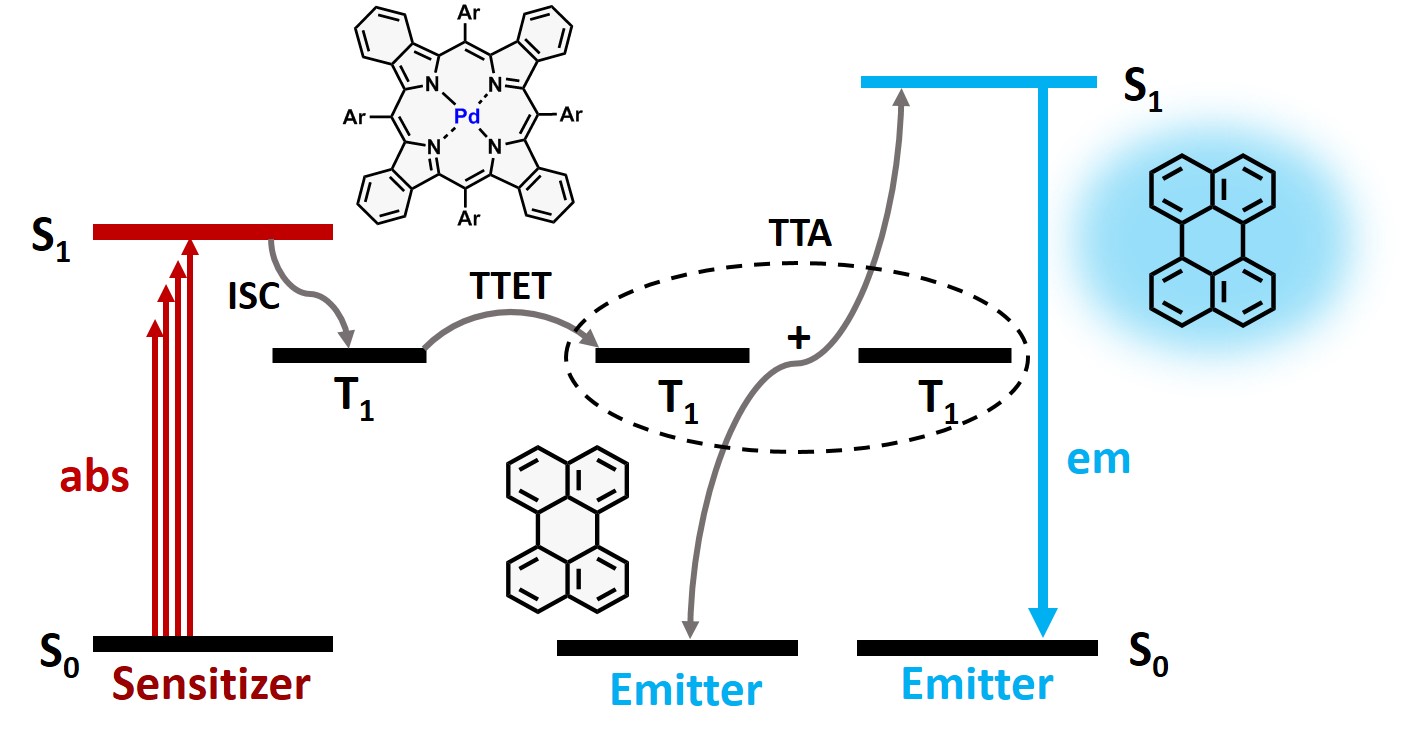Triplet-triplet annihilation upconversion (TTA-UC)
Photon upconversion (UC) is a process in which light of long wavelength is converted to photons of higher energy, e.g. red into yellow light conversion. Photon upconversion via the mechanism of triplet-triplet annihilation (TTA) can be performed with high efficiency (up to 50%). As illustrated in figure below, a typical TTA-UC system combines two components: a sensitizer and an emitter, undergoing a series of energy transfer processes. Absorption of light by the sensitizer leads to formation of its triplet excited state (T1) via the process of intersystem crossing (ISC). Further, this state transfers its energy to the emitter molecule (triplet-triplet energy transfer (TTET)). Next, the excited triplet states of two emitter molecules undergo triplet-triplet annihilation (TTA), in which one emitter molecule returns back to its singlet ground state and the other molecule gains the energy of both triplet states and is excited to a higher energy singlet state (S1). As the singlet state of the emitter decays radiatively back to the ground state, a fluorescence photon is emitted which is strongly blue-shifted compared to the excitation photons.
 Energetic scheme for the TTA-UC process in a system composed of Pd(II) tetrabenzoporphyrin as a sensitizer and perylene as an emitter. |
Due this unique feature, in recent years TTA-UC has found various applications such as photocatalysis, bioimaging, photomedicine and solar energy conversion.
My research in this field concerns three particular aspects:
- design and synthesis of advanced sensitizer and emitter molecules for maximizing the efficiency of TTA-UC
- upconversion of near-infrared light (700-900 nm) into visible light using pi-extended porphyrins and related dyes
- protection of TTA-UC materials from quenching and oxidation by molecular oxygen
